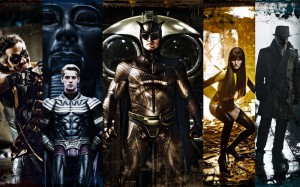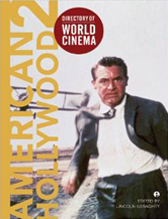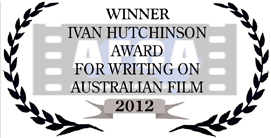
REVIEW: Watchmen
Etched on the fringes of popular culture, the work of Alan Moore has long been regarded with critical acclaim, his graphic novels the subject of a devoted fan following. In the past decade, with the less-than-impressive cinematic adaptations of his works From Hell, The League of Extraordinary Gentlemen, and V for Vendetta, Moore’s popularity may have grown, yet his art still remains in one sense un-realised on the big-screen. It’s perhaps cold comfort to Moore then, that Watchmen, while far from the ideal adaptation some were hoping for, is the most accomplished of the lot.
Set in a re-imagined 1985 in which a Richard Nixon led-USA sits on the precipice of nuclear war with the Soviets, Watchmen details a society where superheroes have become outlawed and the threat of apocalypse looms large. When retired ‘mask’, the nihilistically violent Comedian, (Supernatural’s Jeffrey Dean Morgan), falls victim to foul play in the opening scene, a group of ex-crime fighters re-unite to investigate the connections between the murder and its possible political implications.
 As far as comic book fare goes, Watchmen is definitely at the non-camp end of the superhero spectrum. Underneath the fancy costumes and elaborate sets is a pervasive sense of loss; a tacit acknowledgement that the justice each had fought for (that which drives most superhero narratives) has long since disappeared. Resigned to bouts of nostalgia (the Night Owl reminisces weekly with the man who had earlier incarnated his suit), vigilantism (Rorschach treads the city streets looking to unleash his anger and resentment in a meaningful way), or lost in work (Dr. Manhattan spends his time with complex machinery avoiding girlfriend Laurie, aka the Silk Spectre), these figures cut a downcast presence.
As far as comic book fare goes, Watchmen is definitely at the non-camp end of the superhero spectrum. Underneath the fancy costumes and elaborate sets is a pervasive sense of loss; a tacit acknowledgement that the justice each had fought for (that which drives most superhero narratives) has long since disappeared. Resigned to bouts of nostalgia (the Night Owl reminisces weekly with the man who had earlier incarnated his suit), vigilantism (Rorschach treads the city streets looking to unleash his anger and resentment in a meaningful way), or lost in work (Dr. Manhattan spends his time with complex machinery avoiding girlfriend Laurie, aka the Silk Spectre), these figures cut a downcast presence.
But the film also differs from the traditional superhero narrative in other interesting ways: the moral ambiguity of its characters – particularly Rorschach whose antihero credentials are writ large in his noir-styled voice-over narration – and the film’s discontinuous structure – where events overlap or emerge through flashbacks – lend Watchmen a certain enigmatic quality.
To the credit of Zack Snyder (300, Dawn of the Dead), Watchmen also manages a few inspired moments beyond that of its textual origins – such as the opening credit sequence that condenses the rise and fall of the ‘Minutemen’ (the earlier band of superheroes) into a series of historical tableaux drawing on imagery as diverse as Da Vinci’s ‘The Last Supper’, Warhol’s celebrity screen-prints, JFK’s assassination, and the moon landing. Elsewhere the slow-motion action sequences, while less original, still evince a carefully choreographed balletic violence that shows off the director’s flair for visual artistry.
That said, the film’s attempted recreation of an alternative 1985 is not entirely harmonious. Watchmen’s visual schema strikes an uneasy balance between its 1980s retro fashioning and hyper-futuristic costuming and architecture. Meanwhile, the soundtrack – predominantly a mix of 1960s activist ballads and 1980s pop songs – is overbearing and seems incongruous with much of the on-screen action. For instance, when Wagner’s ‘Ride of the Valkyries’ overlays the film’s Vietnam War sequences it’s unclear whether the score is meant to be ironic or merely a postmodern nod to Apocalypse Now. Either way, it doesn’t quite come off.
As a consequence of the film’s strenuous focus on style, Snyder tends to turn a blind eye to the more allegorical qualities that underlined Moore’s tale. While 300’s reduction of narrative into an all-consuming visual feast somehow seemed acceptable, here (as in his remake of Dawn of the Dead), Snyder’s subjugation of the political for the stylistic is far less ingenious.
Despite a few cursory references to the tension between the warring superpowers, and a heavily made-up Nixon bursting out lines like “God Exists and he is American”, the deeper moral questions over violence, patriotism, and the scepticism towards social change are ultimately overrun by the more marketable imagery of spandex-clad warriors doing battle with one another.
 Not surprisingly, considering his tumultuous relationship with film studios in the past, Moore’s name has been excised from the film, leaving Watchmen illustrator Dave Gibbons to sole creative credit from the original source. Given that Snyder’s Watchmen is likely to be remembered more for its imagery than its writing there’s almost something fitting about that omission. When all’s said and done it’ll be Moore’s Watchmen that’s likely to last the truer test of time.
Not surprisingly, considering his tumultuous relationship with film studios in the past, Moore’s name has been excised from the film, leaving Watchmen illustrator Dave Gibbons to sole creative credit from the original source. Given that Snyder’s Watchmen is likely to be remembered more for its imagery than its writing there’s almost something fitting about that omission. When all’s said and done it’ll be Moore’s Watchmen that’s likely to last the truer test of time.





RSS feed for comments on this post. TrackBack URI